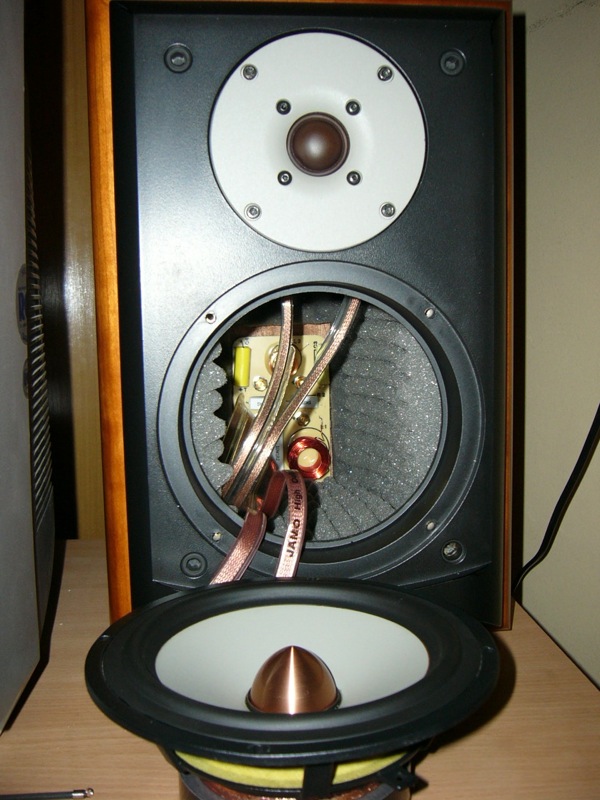corElement
Well-Known Member
I've been doing some research on how to tame a tweeter that goes too far in a bi-wireable speaker and I'm curious to know
What's the difference between
A. Putting an Attenuator /resistor volume pot directly on the speaker cable before it connects to the tweeter binding post in this picture below

And
B. When I connect it after the crossover, but prior to the tweeter leads inside the speaker enclosure. (Ideally I would not like to do this as I don't want to disturb the internals of the speaker as it uses expensive parts which I can't afford to replace, pic of internals below )

In my head a pentometer/resistor/volume control knob is just controlling the current flow / db, so wouldnt both scenarios produce the same results where there's just a reduction in DB, or are there other variables?
Also, what is a "Trap" in a crossover?
What's the difference between
A. Putting an Attenuator /resistor volume pot directly on the speaker cable before it connects to the tweeter binding post in this picture below

And
B. When I connect it after the crossover, but prior to the tweeter leads inside the speaker enclosure. (Ideally I would not like to do this as I don't want to disturb the internals of the speaker as it uses expensive parts which I can't afford to replace, pic of internals below )

In my head a pentometer/resistor/volume control knob is just controlling the current flow / db, so wouldnt both scenarios produce the same results where there's just a reduction in DB, or are there other variables?
Also, what is a "Trap" in a crossover?
Last edited:


